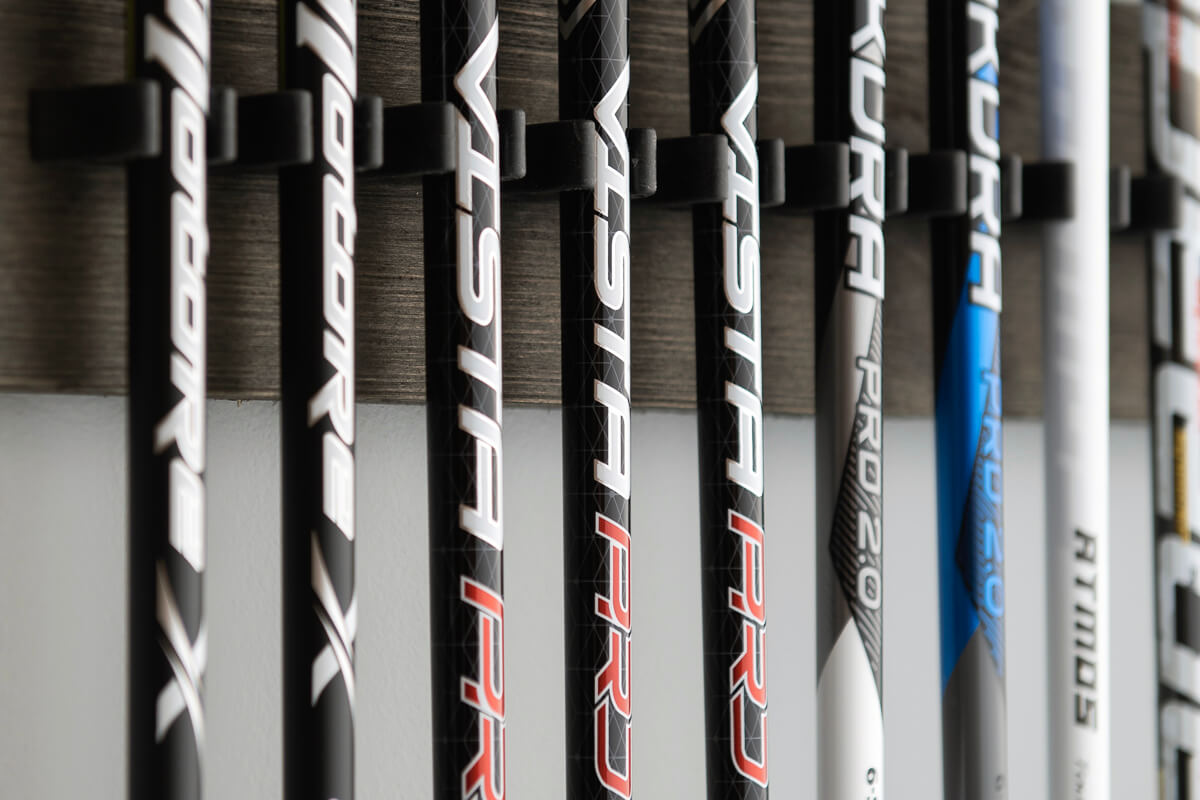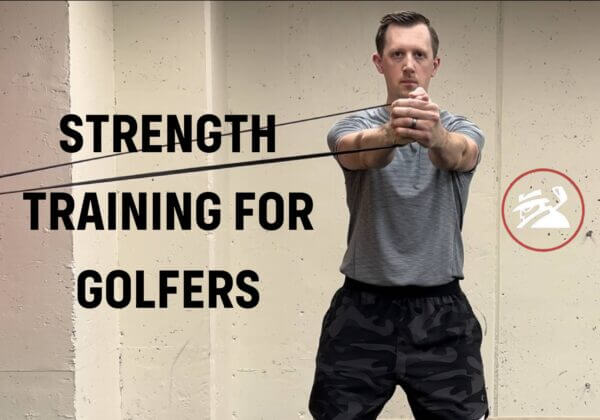To pure or not to pure? That is the question. Or the less esoteric version: Should I get my shafts pured?
I’d bet a nice steak dinner that many of you are thinking, “I don’t even know what that means.” I hear you. Hang tight.
Is a reasonable expense? That’s a common query from our readers. Particularly if the discussion leans towards boutique clubfitters or the differences between buying clubs off the rack or having a set custom fitted.
But before we can answer the question, let’s start with a common definition.
SST PURE – What is it?
The textbook definition might read something like this: A process by which a specialized machine locates the optimal (most stable) orientation of a shaft.
The premise is that every shaft is neither perfectly round nor perfectly straight. As such, the SST PURE system can analyze a shaft to find the neutral axis, the most stable bending plane. From there, the thinking is that once installed in its optimal orientation, a more stable shaft leads to improved distance and consistency.
You might have also heard terms such as “spine-ing” or “FLO-ing”. Without getting too far into the weeds, both terms are related but not necessarily the same as SST PURE. Spine-ing deals with locating the spine in the shaft and installing the shaft so the most consistent bending position is pointing directly toward or away from the target line.
FLO-ing is similar but the process is a bit different. The goal is to orient the shaft in the head such that it achieves flat-line oscillation (FLO). To accomplish this, clubmakers use a vice, +/- 200-gram drill chuck and possibly a laser. In fact, Golfworks has specific FLO tracer devices designed for this process. From there, a horizontal load is placed on the shaft and, when released, the shaft oscillates back and forth. If the movement creates an oval pattern, the shaft isn’t in an ideal position. Once it oscillates on a single plane (flat line), the shaft is ready for final installation.
Pros
SST PURE proponents will cite internal and several third-party studies that show clear evidence of improved accuracy (dispersion) and distance. There’s also plenty of anecdotal evidence from golfers who testify to better performance after switching to PURE’d shafts. Hearsay isn’t exactly statistically significant data but plenty of golfers make purchasing decisions on far less.
Moreover, the concept is entirely believable. It makes sense that even the most advanced shaft manufacturers can’t make a perfectly concentric shaft. And if every shaft exhibits some level of inconsistency (even the uber-expensive ones), then it might also make sense to invest a bit more to ensure you’re getting optimum performance.
And while it’s an additional cost (typically $25 to $40 per shaft), the extra couple of hundred dollars might not have the same sting if you’re already investing several thousand in a new set.
Though less compelling, SST PURE would also point out that “almost $2 billion” has been won on the PGA TOUR by players “who have had SST PURE their shafts.” That said, it isn’t clear how much money has been won by players who haven’t had SST PURE their shafts over the same period.
Cons
When golfers buy a dozen balls or a new wedge, they know exactly what they’re getting for a given price. With a service like SST PURE, the deliverable isn’t as clear. And that additional bit of mystery leaves plenty of room for criticism.
Additionally, fitting institutions such as Club Champion, which purchased SST PURE in 2019, likely won’t disclose the exceptionally friendly profit margins of what amounts to a rather minimal “per use” licensing fee. From a business standpoint, high-margin products/services that are easy to up-sell tend to find favor with C-suite executives.
It’s unlikely golfers will find many (if any) premium shaft brands promoting a third-party service such as SST PURE. To that end, I get that it’s uncomfortable for Fujikura, Mitsubishi or Graphite Design to tell golfers that even though they just spent $350-plus on a new shaft, that to really get the most out of industry-leading technology, you should invest another $40. That’s a tough sell. The message seems to be that leading companies feel that SST PURE doesn’t improve the performance of a premium golf shaft. At least not in a quantifiably significant manner.
It’s not as though major shaft manufacturers don’t know about SST PURE or the basic methodologies involved. To that end, shaft companies can (and do) provide instructions as to what they feel is the optimal installation orientation (i.e., logo down/logo up). Anecdotally, I’ve had several industry sources confirm that the difference between what the SST PURE machine recommends and a “stock” logo-down installation is essentially the difference between the hour-hand reading 11 o’clock and 1 o’clock.
A final point to consider is that some adjustable hosels alter the shaft orientation when you increase/decrease loft. So, hypothetically, let’s say you had an SST PURE’d shaft installed at “standard” and increased the loft by one degree. Because the shaft has rotated, it’s no longer in an optimal orientation.
Left To Ponder
In situations where grey area far exceeds black and white, we’re left with more questions than answers. Is SST PURE worth an extra $35 or so per club?
It depends.
Testing the validity of claims made by SST PURE proponents is feasible. However, the most recent work done by Gene Parente (Golf Labs) is based entirely on robot data. Not player data. That’s problematic. Humans play golf. Robots don’t.
Robots are great for R&D purposes. But if we really want to assess how golf equipment behaves on the course under typical playing conditions, human testing is still the best approach. Given that, I can understand why both shaft companies and SST PURE proponents would be reticent to go down that path.
Moreover, manufacturing processes and materials will likely continue to improve. As such it’s reasonable to think that shaft companies are capable of solving any potential issues internally. If that’s true, then what?
You tell us.

















Rocky
1 year ago
The mobile club maker on youtube did some testing of shafts, and found there is no difference in pure shafts vs non-pured shafts in the first shaft flex release. And since the shaft only flexes once in the golf swing, you are getting no benefit in puring your shafts..